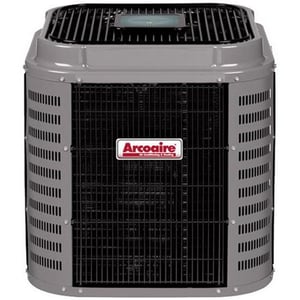Wolseley PRO Pipeline Blog
Air quality is a common concern in homes across North America. As an HVAC contractor, homeowners turn to you as the expert on indoor air quality. Providing helpful insights and solutions to improve the health of your customers and their families is a great way to provide excellent customer service and increase homeowner confidence.
One of the main causes of poor indoor air quality is allergens floating through the air. Airborne allergens can range anywhere from mildly irritating to very dangerous for those living in a home. Some of the allergies produced in a home include mould spores, dust mites, combustible fuels. As annoying as these allergens are, there are solutions you can offer to customers.
Here are the top five solutions you can give customers to help them improve allergens in their home and indoor air quality:
1) Check the HVAC System and Ducts
First and foremost, when helping a homeowner improve allergens and indoor air quality, you should examine their HVAC system, including the air ducts. Because the HVAC system and air ducts are responsible for how air is carried throughout a home, any issues in the system can mean allergens wafting from room to room.
Begin by inspecting the air ducts to see if there are any cracks or damaged areas that should be replaced. Duct cleaning is the next step and should be done to effectively eliminate the dust or allergens building up inside. How often homeowners should be getting their ducts cleaned depends on their lifestyle and what you find upon your inspection. If you see excessive amounts of allergens including dust mites, pet dander or mould, then homeowners may need their ducts cleaned every year instead of every five years. Also, if you find animal droppings, let the homeowners know so you can schedule follow up inspections after cleaning and repairing the ducts.
Part of your HVAC inspection should include a check on the heat recovery ventilator. A heat recovery ventilator ensures that hot air from the ducts and any exhaust fans is vented outside, and air drawn in is acclimated to room temperature. The heat recovery ventilator needs to work effectively to improve allergens and indoor air quality, plus keep the home’s occupants comfortable.
Browse heat recovery ventilators on Wolseley Express.
Finally, make sure your customers are changing out their furnace filter every 30-90 days. Ideally, they should invest in a HEPA filter to collect the smallest of air particles, but the main thing is that the filter should be changed on a regular basis to ensure it’s effectively trapping allergens and improving indoor air quality. Contacting your customers to remind them about changing their filters is also great for customer service and building your relationship, and another way to keep you top of mind for all their home comfort needs.
2) Invest in Proper Ventilation
Ventilation plays a large role in reducing allergens in a home and improving air quality. By having proper ventilation in a home, you’re bringing good air inside a home and pushing out excess moisture.
There are a few key rooms that are prone to allergens due to their nature in retaining moisture. At the top of this list are bathrooms closely followed by basements. Bathrooms naturally build more moisture levels because of daily activities like taking hot showers, taking baths and washing hands. The build-up of moisture often leads to mould, thus lowering the air quality of a home.
To combat this issue, suggest that homeowners install an exhaust fan in the bathroom and make a habit of using it. This fan should directly vent to the outside to prevent moisture from travelling through the ducts in the home. When it comes to choosing bathroom fans, there are a few options for homeowners to choose from, like the Broan Flex DC fan. 
You can shop it and other bathroom fans on Wolseley Express here.
As a general rule, homeowners need to have a bathroom ventilation fan that is rated for as many cubic sq. feet (CSF) as they have sq. footage of flooring in the bathroom. The larger the bathroom, the higher of CSF they need to properly ventilate the bathroom to reduce allergens and mould.
After taking showers or baths, homeowners should continue to run the bathroom fan for another 15 minutes to remove as much moisture as possible. If you discover the homeowners are particularly sensitive to dust, you can also suggest they remove any carpeting or rugs from the bathroom setting. Moisture, as well as dust mites, can settle into these places and create more problems.
3) Inspect Gas Sources
Fossil fuels found in natural gas are another contributor to poor air quality in the home and can lead to allergies, asthmatic triggers and colds. Many homes use natural gas for their furnace, stove and fireplace, resulting in gas burning on a frequent basis.
While people aren’t really “allergic” to natural gas per se, burning gas does produce carbon monoxide and more notably nitrogen oxide, which is an irritant that travels through the air and affects the lungs. It’s an effect similar to allergens in the air, and if released in high or unsafe levels, can be harmful. Rest assured, homeowners can safely use natural gas in their homes if the sources for the gas are installed properly and maintained.
When you are inspecting a home, be sure to find where the gas lines are located and check to see if there are any leaks that could be seeping into the home through the foundation or pipes. By sealing off leaks and cracks, you’ll ensure the gas doesn’t stay trapped in the home.
Another important thing to check is if the appliances are properly ventilated to the outdoors. For example, gas stoves should have an exhaust pipe that vents to directly outside, eliminating allergens and irritants, and lowers the risk of gas, moisture, odours, and grime from building up in the kitchen. Homeowners have a range of options to choose from with ventilation including range hoods for the kitchen and gas furnace ventilation pipes. You can help them determine what is best for their needs depending on the appliance models
4) Keep Humidity Levels Stable
Another way to improve allergens and indoor air quality is to keep humidity levels stable year-round throughout the home. Did you know that dust mites love humidity and thrive when there’s moisture in the air, on objects and on people? According to the American Academy of Allergy, Asthma and Immunology, to keep dust mites at bay, it’s important to keep humidity below 50% in a home.
You can suggest different options for homeowners to use to keep humidity levels stable in their home to improve allergens and air quality. One of the obvious choices is a dehumidifier which draws out moisture from the air and into a receptacle for the homeowners to dump out. This is a cost-effective option and models can be chosen based on the sq. footage of the home. Dehumidifiers can be used in both the warmer months and the cooler months to keep humidity levels stable. A few extra on hand after a flood is also useful for homeowners to remove excess moisture and dampness before mould forms.
During the summer when temperatures and humidity levels rise, it’s also recommended that homeowners run their air conditioning units. This is because when hot air ventilates out and cool air is vented back into the home through the unit’s evaporator coil, the environment becomes undesirable for allergens, dust mites and mould.
Browse residential air conditioners on Wolseley Express here.
5) Clean or Repair Plumbing and Sewage Systems
While this may seem like the least likely method to improve allergens and indoor air quality, cleaning and repairing plumbing for clients is important to maintain healthy air quality levels. As mould and mildew grow in moist areas, it’s important for homeowners to frequently clean their plumbing products including wash basins, sink traps, pipes, toilets, bathtubs and drains.
If you are inspecting a home and notice that there is a crack or leak in the plumbing that is causing mould growths, be sure to clean the area and fix the problem. It’s also worth looking at the sewage system of the home to see if there is a leak or pressure building due to a blockage.
Next time a client calls you to help improve allergens and indoor air quality, use these top five tips as a starting point for your inspection.
For more information about allergens and air quality, check out our previous post about the benefits of indoor air quality checks, and sign up to be a Wolseley PRO here.








